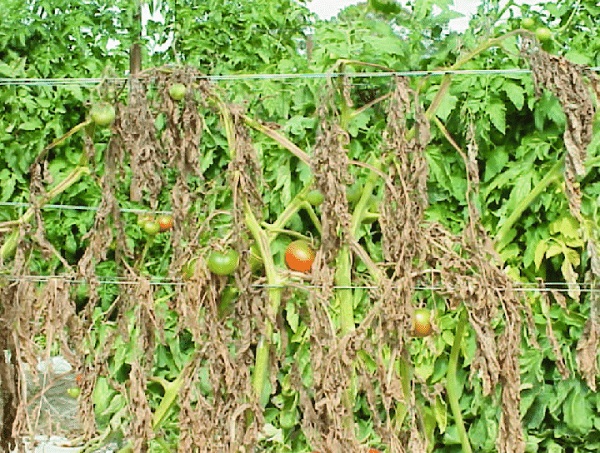
Tomatoes, beloved for their vibrant color, rich flavor, and culinary versatility, are a staple in gardens and kitchens around the world. However, an insidious enemy known as Fusarium wilt poses a significant threat to these cherished plants. Fusarium wilt, caused by the soil-borne fungus Fusarium oxysporum, can devastate tomato crops, leading to reduced yields and compromised quality. In this article, we will investigate Fusarium wilt, explore its symptoms, and provide effective strategies for prevention and management.
Understanding Fusarium Wilt
Fusarium wilt is a vascular disease that disrupts the tomato plant’s water and nutrient transport system. The fungus infiltrates the plant through the roots, colonizing the vascular tissues and obstructing water flow. This leads to wilting, yellowing, and eventual death of the affected plant. There are multiple strains of Fusarium oxysporum, each targeting specific plant species. In tomatoes, the strain responsible for Fusarium wilt is known as Fusarium oxysporum f. sp. lycopersici.
Recognizing Symptoms
The symptoms of Fusarium wilt in tomatoes manifest gradually. They typically start with the lower leaves showing signs of wilting, yellowing, and browning along the edges. As the disease progresses, these symptoms move upward through the plant, causing overall wilting and stunted growth. To confirm Fusarium wilt, a laboratory analysis of the plant’s tissues may be necessary.
Prevention and Management
While Fusarium wilt can be devastating, there are several proactive measures that gardeners and farmers can take to prevent its spread and manage its impact.
Resistant Varieties
Choose tomato varieties that are resistant to Fusarium wilt. Many seed catalogs provide information about disease-resistant options.
Crop Rotation
Practice a three-to-four-year crop rotation to disrupt the fungus’s life cycle. Avoid planting tomatoes, peppers, or other susceptible plants in the same location year after year.
Soil Health
Maintain well-draining soil and ensure proper soil pH. Healthy soil promotes strong root systems, making plants less susceptible to infection.
Sterilize Equipment
Disinfect tools, pots, and containers with a solution of bleach and water (1:9 ratio) before using them to reduce the risk of spreading the fungus.
Infected Plant Removal
If a plant is diagnosed with Fusarium wilt, promptly remove it from the garden to prevent the disease from spreading to healthy plants.
Fungicide Treatment
While not a cure, some fungicides can suppress the spread of Fusarium wilt. Consult with local agricultural extension services for recommendations.
Beneficial Microorganisms
Introduce beneficial microorganisms, such as mycorrhizal fungi, to the soil. These organisms can enhance the plant’s natural defenses against pathogens.
Proper Watering
Water the plants at the base rather than overhead to minimize the spread of fungal spores. Water in the morning, which allows the foliage to dry quickly.
Mulching
Apply organic mulch to help maintain consistent soil moisture and temperature, reducing stress on the plants.
Conclusion
Fusarium wilt poses a significant challenge to tomato growers, but with careful attention and proactive practices, its impact can be minimized. By selecting resistant varieties, practicing crop rotation, and maintaining healthy soil conditions, gardeners and farmers can help protect their tomato plants from this destructive disease. Swift action, regular monitoring, and adherence to preventative measures are key to successfully managing Fusarium wilt and ensuring bountiful tomato harvests for years to come.
Related Articles & Free Email Newsletter Sign Up
How to Deal With Blossom End Rot & Split Tomatoes
How to Grow Great Hydroponic Tomatoes




Comment here